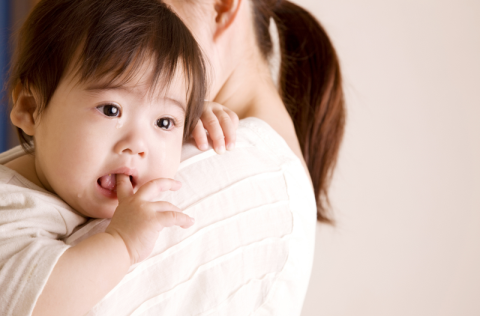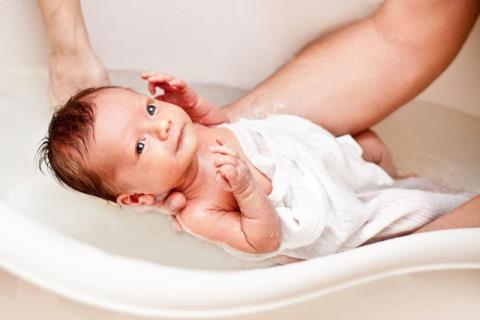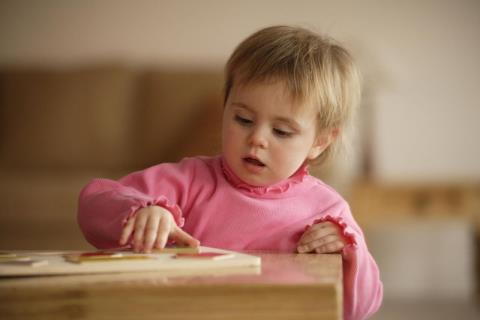After birth, how long does it take for a baby to shed the umbilical cord? What are the signs of umbilical cord loss and what should mothers pay attention to? The following article will help you find the answers to these problems!
The umbilical cord is the connection point between the mother and the baby but also the source of life for the fetus during 9 months and 10 days in the womb. With a length of about 50cm, the umbilical cord plays an important role in the transmission of nutrients and oxygen. At the same time, it helps to eliminate waste products from the fetus through the placenta into the mother's blood. So after birth, how long is the umbilical cord loss in babies and what should be noted? Let's find the answer in the article below!
How long does it take to shed the umbilical cord in a newborn?
How long does it take to shed the umbilical cord in a newborn? This is a common question asked by expectant mothers. Usually after birth, the baby will lose the umbilical cord in about 5-15 days, the average is 8-10 days.
However, there are also some cases where the baby falls off the umbilical cord earlier or later, especially for the first baby or the baby born prematurely will usually shed the umbilical cord quite late. Therefore, if after the above time, the baby still has not shed the umbilical cord, the mother does not need to worry too much but arbitrarily influence. Instead, you should patiently wait for the umbilical cord to fall off naturally.
How long does it take to shed the umbilical cord in a newborn?
How to take care of newborn umbilical cord before falling off
In the first few days of life, a newborn's navel will usually be a shiny, yellow color. After a few days, the umbilical cord dries up and gradually turns brown, black-gray or blue and then falls off. Before the baby's umbilical cord falls off naturally, pregnant mothers need to pay attention to a few issues after taking care of the baby's navel:
- Keep your baby's umbilical cord clean and dry by wearing loose, airy clothes, folding diapers below the navel so that the umbilical cord is open and regularly exposed to air. This will help the umbilical cord to dry quickly and avoid getting wet, allowing bacteria to enter.
- Do not clean the baby's umbilical cord with soap or alcohol at 70 degrees. When bathing a baby, it is important to avoid contact with soap and water for the umbilical cord. Because it easily causes moisture and inflammation. If the baby's navel has mucus or bleeding, the mother can use a cotton swab or soft cloth to gently wipe the baby.
- Absolutely do not arbitrarily affect the baby's umbilical cord, even if the stalk is about to fall off. Arbitrarily plucking a newborn's umbilical cord before the necessary time can cause bleeding, even infection.
How to take care of a newborn after umbilical cord loss?
After the umbilical cord falls off, it will take about 7-10 days for the umbilical cord to heal completely. Before the navel heals, you need to keep your baby's navel clean and dry:
- Use a soft cloth moistened with water to gently wipe the dirt or spillage, avoid using soap, alcohol or any other solution.
- Regularly exposing the navel to the air will help it heal faster. Mothers should dress babies in cool, ventilated clothes, diapers must be below the navel to avoid contamination from feces and urine.
- Absolutely do not use bandages or anything else to bandage the umbilical cord.
- When bathing your baby, you should avoid exposing the navel for too long. And should dry thoroughly after bathing.
- When the umbilical cord falls off, there will usually be some bleeding, which is completely normal. In addition, you may also see pink scar tissue or a little yellow discharge inside.

How to take care of a newborn after umbilical cord loss?
5 signs appearing in the navel of a newborn that mothers need to pay attention to
Basically, it's very rare for babies to get an umbilical infection. According to statistics, out of about 200 children, only 1 child has an infection in the umbilicus and surrounding areas. However, you should still pay attention to monitor and pay attention to 5 telltale signs for timely handling:
- The umbilicus is red, swollen, and bleeding profusely and persistently (after about 10 minutes of pressure, it still bleeds or bleeds more than 3 times a day).
- On the stump of the umbilicus, after falling off, there is a piece of red tissue, which may have a yellow discharge. This can be a sign of umbilical granuloma, the mother needs to take the baby to the doctor for appropriate treatment.
- The umbilicus is oozing or moist, with little pus on the surface. This may be a sign of infection or other diseases such as umbilical granuloma, umbilical canal, etc.
- The umbilical cord does not fall off after 3 weeks, the child has symptoms such as fever, refusing to feed, fussing when touching the belly button, sleeping a lot, the umbilical cord or the area around the belly button is swollen, oozing pus and has a bad smell.
Is it okay for a newborn to twist his or her belly button?
In some cases, after the umbilical cord falls off, there is often a bulge outside the abdominal wall at the umbilicus. When the baby cries and twists, it will bulge and expand, and when the baby is still, it will shrink.
This condition is called an umbilical hernia and is common in 10-20% of babies . When encountering this condition, mothers do not need to be too worried because most of these protrusions will not cause pain, will not break and will improve on their own after 4 years of age.
Is it okay if a newborn twists his or her belly button?
However, there are still cases that require surgical intervention such as hernias larger than 2.5cm or not automatically pushed in after 4 years of age.
Above are some sharing about the time of umbilical cord shedding in babies and what mothers need to keep in mind when taking care of babies. Hopefully, it will help you gain more useful knowledge on your motherhood journey!







